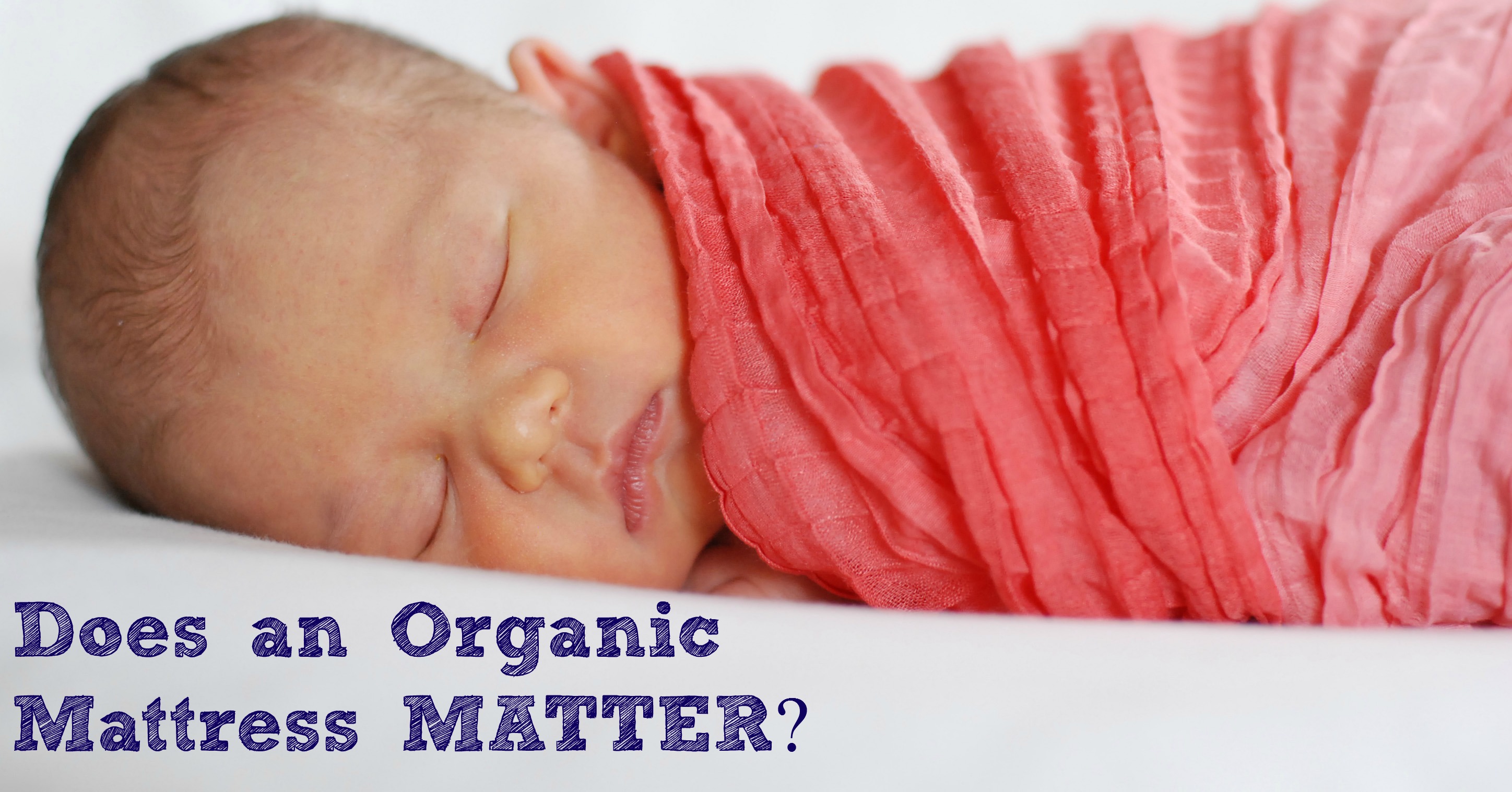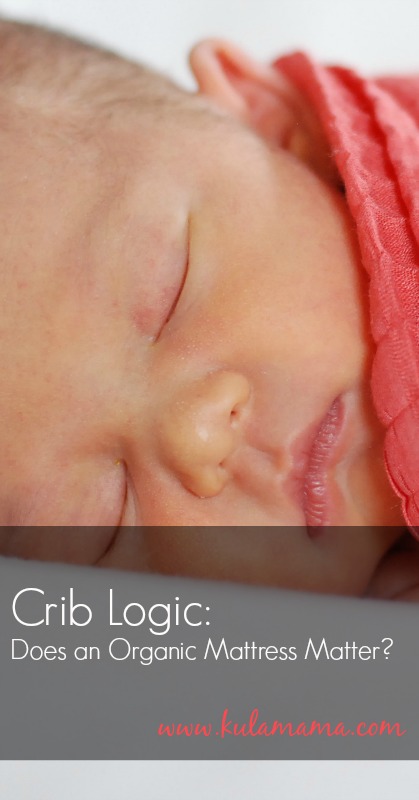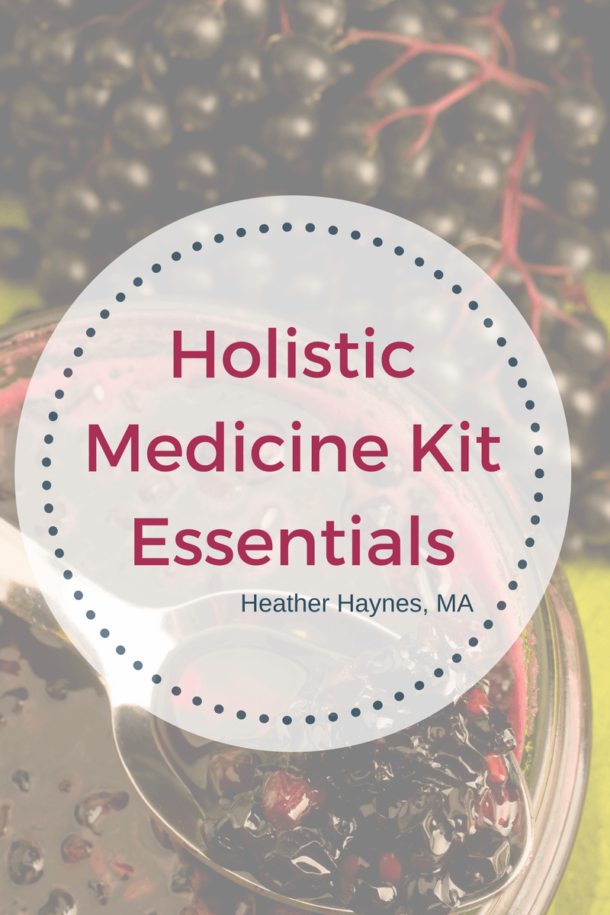Did you know we spend a third of our lives in bed? One third. That’s a long time. Sure, maybe your average number of hours declines with an infant in the house, but you make up for it once your kiddo hits the teen years. With all that mattress FACE time (literally) it might be important to know more about your bed.
Conventional mattresses today come in a variety of shapes and sizes, but they share one common denominator (you know what’s coming, don’t you?): synthetic chemicals. As parents it is a good idea to know about the chemicals our children are sleeping on. Here are a few of the worst offenders:
Fire Retardants (PBDEs). PBDEs are my personal nemesis because they are used in the manufacturing of almost everything (computers, televisions, cell phones, remote controls, breastfeeding pillows, car seats, PAJAMAS….etc. etc. etc.). Studies have shown these chemicals cause much more harm in infants (even in utero) than in adulthood. Fire retardants can disrupt infant brain development among many, many other things (the list is so long I don’t want to type it here because you will stop reading and I need you to last for the duration of the article). I think it’s especially important for women to note that PBDEs disrupt thyroid function, something that is already taxed during pregnancy, so women should also be aware of their PBDE exposure. For more information about household items containing PDBEs click HERE.
Ironically, fire retardants are sprayed on conventional mattresses to combat the high flammability of the other synthetic materials used in mattress production such as polyurethane foam and PVC.
Formaldehyde. Used as an adhesive and has been linked to lung, throat, nose, brain and blood cancers. Repeated exposure can cause respiratory distress, asthma, and increase your chances of getting pneumonia and bronchitis.
Polyurethane Foam. Used as padding in conventional mattresses. Causes skin irritation and respiratory problems. Studies have also linked this material to an increased cancer risk.
PVC. PVC is the vinyl plastic used in some conventional baby mattresses. The health concerns associated with PVC include: cancer, endocrine disruption, neurological damage, birth defects and impaired child development, reproductive and immune system damage.
Some of these chemicals, like fire retardants, were introduced into our bedrooms in an attempt to keep us safe and fire-free in the bedroom. The problem is there is a growing body of evidence telling us these chemicals are dangerous and less evidence telling us these chemicals will protect us. Another problem we mamas have? Fire retardants are sprayed not only on mattresses, but also on an array of baby products…from car seats and pack and plays to pajamas and nursing pillows.
Last year, the Consumer Product Safety Commissions issued statements discouraging the use of fire retardants on baby products. Why? (I’m going to type the LONG list associated with fire retardants now so you might want to sit down.) CPSC scientists cited troubling studies linking fire retardant exposure to cancer, birth defects, thyroid dysfunction, reproductive problems, permanent learning and memory impairment, decreased sperm count, hyperactivity, learning disabilities and much more. OH MY. Good to note we’ve had a steady increase in cases of ADHD/ADD since 1996 (no I’m not saying PBDEs cause ADHD/ADD—I just think it’s interesting.). PBDEs have also been linked to SIDS. Even with this mountain of evidence, fire retardants are still in use because….well…..they’re cheap to use and some might say chemical company lobbyists have a way with words. For my Californian mamas out there, it’s not good news for us. California is the only state to REQUIRE fire retardants on ALMOST ALL BABY PRODUCTS. The result? Californians have twice the level of these chemicals in our blood than the rest of the country.
Wow, I feel really clean.
For all these reasons and more…I was adamant that Kula Baby NOT sleep on a mattress sprayed with chemicals when we brought him home in August of 2008. Was finding a chemical-free mattress hard to do? Actually, no, because wool is a NATURAL fire retardant….no chemicals required and it meets all federal safety requirements. We bought our mattress here. I’ve been happy with it, Kula baby has been happy with it, and Kula hubby has been happy with it. We’re one big, chemical-free happy party because of our organic crib mattress. The organic ingredients (wool, latex and rubber) used in organic mattress production also repel mold and mildew buildup, repel dust mites, and are considered hypoallergenic. These mattresses can improve respiration and alleviate allergies.
As a consumer, make sure you do your homework before investing in a chemical-free (organic) mattress. Marketing experts have grabbed hold of the term ORGANIC and are using it like Kula Baby uses his spoon at dinner, with lots of messy, missed attempts to do it right. Late to the game “organic” mattress makers are trying to sneak in low levels of chemicals (heavy metals, formaldehyde, and PBDEs included) so make sure you are asking questions about the way the mattress is made and also about what materials are used. I recently purchased an organic mattress for the master bedroom and I found many quality retailers sell Pure Rest Organics products (the same manufacturer of Kula Baby’s mattress). So…if you were to ask me where to go, I’d say HERE is a good place to start.
Want more information? You can inform yourself here and here.
Does your child sleep on a chemical-free mattress? Why or why not? Tell me below!




Baby will be sleeping chemical free!! Yea! Thanks for the info and support.